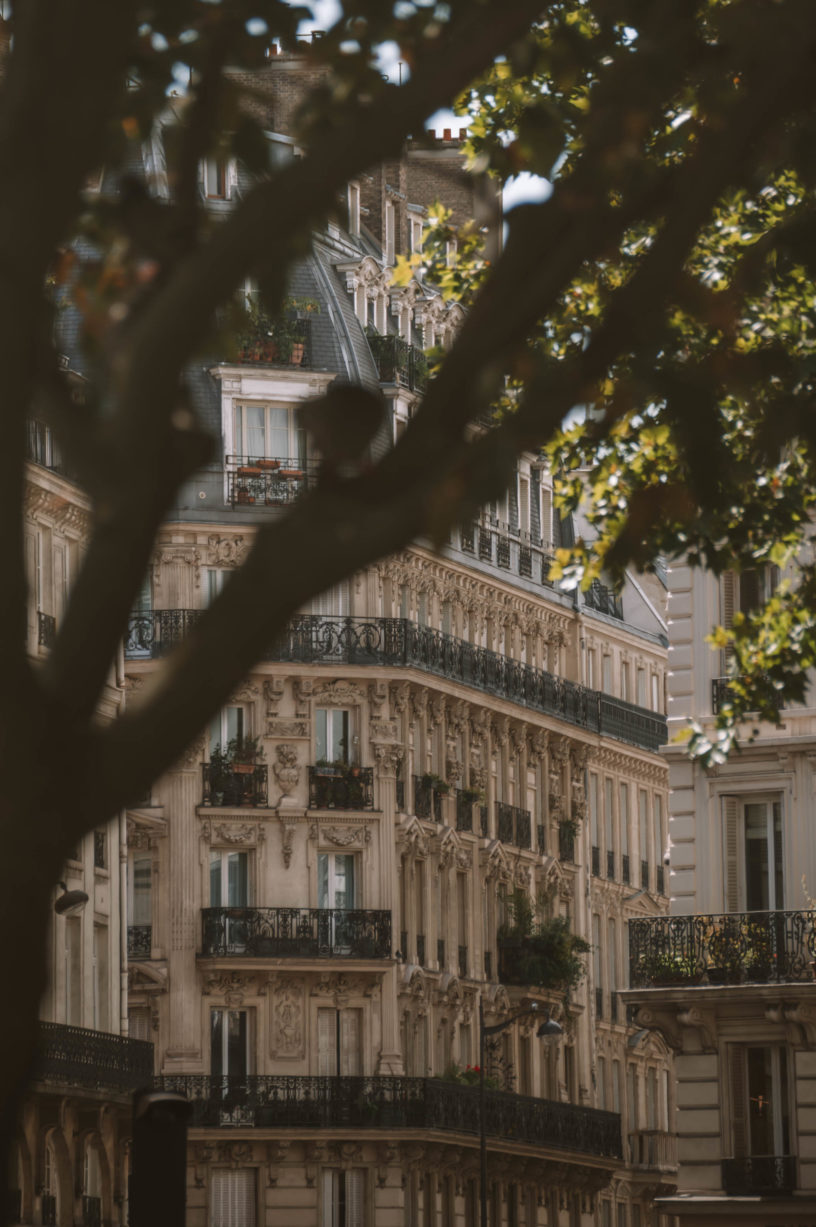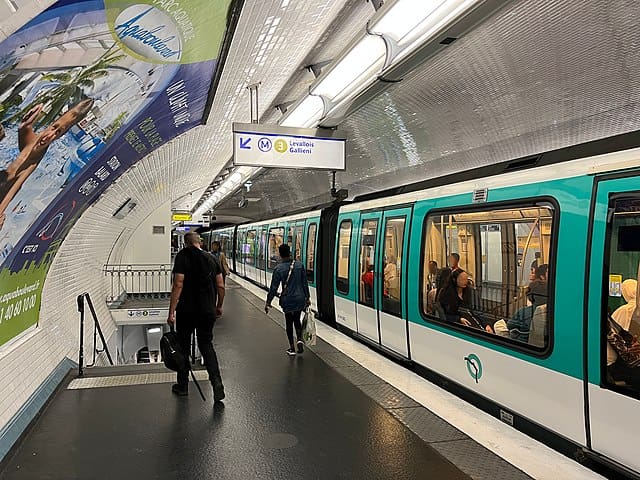The Most Expensive Areas to Live in Paris
*Originally published by Jordan on February 2021 and Updated by Vanessa in October 2022 and by Vanessa M in September 2023.
It’s no secret that Paris is one of the most expensive cities in the world. After all, calling the Ville lumière home means forking over a hefty sum for housing, no matter where in the city you choose to live. But there are some Parisian areas with extra glamorous reputations (and larger than life price tags). In France, real-estate prices include the cost per square meter, which can be shocking!
So are you ready to start dreaming? Here are the most expensive areas to live in Paris.
1. The 4th arrondissement: Ile Saint-Louis and Ile de la Cité
Situated in the true center of Paris and home to the Ile Saint-Louis, Ile de la Cité, Hôtel de Ville, the Place des Vosges, as well as part of the lively Marais district, the 4th arrondissement is one of the most desirable areas to live in the city. That being said, it comes as no surprise that it’s also one of the most expensive areas to live in Paris. The average price per square meter in the 4th is one of the highest in the city, coming in at just over €12,500.
But parts of the 4th arrondissement like the Ile Saint-Louis and Ile de la Cité, escaped Haussmann’s renovations, which means that this quartier holds onto much of its original charm. It’s here that you’ll find a taste of ancient Paris: tiny cobblestoned streets, Gothic architecture, and endless views of the city. And as you probably guessed, this neighborhood commands even higher prices, with the average cost per square meter topping €14,000.
Read also; The Cheapest Areas to Live in Paris
2. The 7th arrondissement: Champs de Mars
Heading over to the Left Bank, we find ourselves in decidedly one of the most expensive areas to live in Paris: the glitzy 7th arrondissement. The 7th stretches along the Seine from Saint-Germain in the 6th until the end of the Champs de Mars, bordered by the 15th to the south.
Being home to the Eiffel Tower, the Musée d’Orsay, Napoleon’s tomb at Invalides, and the Musée Rodin just to name a few, the 7th draws plenty of tourists, but it’s actually an upscale residential area for the most part. This neighborhood features wide tree-lined boulevards and impressive, ornate architecture, and is relatively calm and quiet, especially towards the border with the 6th.
A neighborhood that is beautiful, safe, and convenient are the most desirable features when considering where to live in Paris, making the 7th a clear standout. And the prices all depend on location, location, location. The average price per square meter in the 7th comes out to a whopping €14,000!
But the closer you get to the 6th or the Champs de Mars, the higher prices climb. Avenue Elysée Reclus takes the cake for being the most expensive street in the area, and as it directly overlooks the Champs de Mars and the Eiffel Tower, I can see why. Talk about a dreamy view! If you’d like to live here, you can count on spending upwards of €17,000 per square meter.
3. The 8th arrondissemen: Alma-Marceau and Avenue Montaigne
On the Right Bank, just across the river Seine from the glitzy 7th lies the evidently upscale 8th arrondissement. You’ve been to the 8th if you’ve visited the Grand Palais, the Arc de Triomphe, or the commercial Avenue des Champs-Elysées which connects the Arc and the Place de la Concorde. But despite hosting these famous sites, the majority of the 8th is anything but touristy.
Home to l’Elysée (the President’s home), as well as some of the city’s most exclusive hotels, boutiques, and restaurants, the 8th easily makes the list of the most expensive areas to live in Paris. And due to the high price point, this area is most popular with wealthier families and professionals.
Generally, the closer to the river you get, the higher prices climb. Well, the 8th is no exception. The area around Alma-Marceau is one of the most expensive in the city, with listing prices coming to a whopping €16,000 per square meter. But this isn’t even the priciest neighborhood in the district! Famed for its world-class hotels and designer boutiques, the Avenue Montaigne fetches the highest real-estate prices in the 8th. If you dream of being neighbors with the Plaza Athénée, you can expect prices to hover around €20,500 per square meter!
4. The 16th arrondissement: Passy and Victor-Hugo

Photo by paul wallez on Unsplash
The 16th arrondissement is a historically upscale residential area on the western side of Paris, bordering the Bois de Boulogne. This arrondissement is actually the largest in Paris, it’s the only one to have two separate postcodes. Due to being more spacious than many other arrondissements, the 16th has a large number of multi-room apartments which made it popular with wealthier Bourgeous families in the 19th and 20th centuries.
This gave the area a very upscale and exclusive reputation, but in recent years prices are actually becoming more affordable in the 16th, actually some of the lowest prices on the whole list! Certain areas are more popular than others, with average prices in the swanky Passy or Victor Hugo neighborhoods reaching €11,500 per square meter. The farther from the center you go, the more prices drop and the average price per square meter on the outskirts of the 16th is much more affordable at €9,500.
Read here on how to pick the Parisian neighborhood that will suit you best?
5. The 6th arrondissement: Mabillon
And now for the absolute most expensive area to live in Paris: the 6th arrondissement. At the turn of the 20th century, the Saint-Germain neighborhood became synonymous with literary and artistic life in Paris. The Left Bank was considered the intellectual’s Paris, and many of the city’s most famous literary cafés can be found here.
Nowadays, the 6th has become decidedly upscale with trendy art galleries, swanky restaurants, and designer boutiques dotting every street. And of course, the 6th is home to the Jardin du Luxembourg, and it’s the Mabillon neighborhood running between the Jardin and the Seine that commands the highest prices in the city. The cost per square meter is a staggering €14,500 on average, with apartments in the more desirable streets going for up to €20,000 per square meter!
6. Bastille (11th Arrondissement)
The name Bastille comes from the famed jail that used to occupy this region, which lies between the 4th, 11th, and 12th arrondissements (the raging of what began the French Revolution in 1789).
The prison is no longer there, and this vibrant and vivacious area has since gained notoriety for its youth-oriented pubs and clubs.
7. Charonne (6th Arrondissement)
Charonne, one of only two church cemeteries left in central Paris, has a relaxed, village-like atmosphere that is characterized by cobbled passageways, allotment gardens, and Église Saint-Germain de Charonne. Charonne is home to an array of old industrial structures and zigzagging residential streets.
But the area is also known for its trendy nightlife. Two examples include the Mama Shelter hotel, which has an extremely chic restaurant and rooftop, and the Flêche d’Or arts and entertainment venue, which was built in a former train station.
8. Montmartre (18th Arrondissement)
Montmartre boasts a breathtaking view of the city and was long the residence of craftsmen who were insatiably hungry. Cobblestone streets, fashionable bistros and bars, and the principal winery inside the city limits can all be found in the area. Regardless of the fact that some of its former splendor has been lost, it remains one of Paris’ chic neighborhoods.
It also has a lot of students living nearby, and because there are often large numbers of both students and visitors there in the evenings, it can get quite rowdy. If you’re looking for a quiet place to stay, try to stay on one of the beautiful side streets.
9. La Villette (19th Arrondissement)

Bassin de la Villette by Guilhem Vellut from Wikimedia Commons
La Villette, which had previously been an abattoir, has reemerged as a popular park with cutting-edge architecture, including the silver-clad Philharmonie de Paris and the ground-breaking Cité des Sciences museum complex.
Live performances and an annual outdoor cinema festival fill the yards of Parc de la Villette in the summer. The Canal de l’Ourcq runs beside the park, and you can go along it by renting an electric boat from Marin d’Eau Douce.
10. Eiffel Tower/Champs de Mars (17th Arrondissement)
As you might have guessed, if your main purpose for visiting Paris is to see the iconic Eiffel Tower, you should be at the Eiffel Tower/Champs de Mars (and have stress-free access to certain other enormous attractions).
In addition to the impressive architecture, there are a few outstanding natural histories and modern art museums to visit, as well as the sprawling Parc du Champ-de-Mars. The 7th arrondissement is a bustling, touristy (expensive) area to stay in, but for convenience, it is unbeatable!
Cost of Living in Paris: Everything You Need to Know
Why These are the Best Neighbourhoods to Live in Paris
Prime Location: Many of these areas are centrally positioned which means they are close to important monuments, cultural organizations, and economic districts. This central position lowers the time and effort required for commuting, allowing residents to conveniently access these vital destinations. Furthermore, being centrally located contributes to a vibrant urban feel, as these districts are frequently alive with activity, events, and a variety of amenities.

Alf van Beem, CC0, via Wikimedia Commons
Their historical Significance: Several of these districts have a long history with stunning, centuries-old buildings and lovely cobblestone pathways that take residents back in time. Living in such places offers a one-of-a-kind and captivating ambiance as people are surrounded by the beauty and character of Parisian history which can be seen in the buildings, streets, and cultural traditions that have lasted over time. This historical atmosphere contributes to the overall appeal of these communities.
Cultural Attractions: Paris is famous for its world-renowned museums, galleries, theatres, and restaurants. Many of these communities are located near cultural landmarks giving inhabitants convenient access to art, music, theater, and good eating.
Luxury Shopping: These neighborhoods are frequently home to high-end boutiques, designer stores, and luxury retail districts, catering to inhabitants with discriminating preferences.
Green Spaces: Some of these areas have access to lovely and well-kept outdoor spaces where residents can unwind, exercise, or simply enjoy nature. These green parks provide relief from the bustling daily life and a tranquil setting for leisure and entertainment. They improve the overall quality of life in these neighborhoods by balancing city living with access to natural beauty.

Kirua, Public domain, via Wikimedia Commons
Safety: These communities are generally regarded as safe, with low crime rates, which is an important concern for many inhabitants.
Dining and Entertainment: These areas are notable for their plethora of premium eating places, including restaurants serving both classic French cuisine and international fare. Residents and visitors can enjoy a wide range of culinary experiences from traditional French fare to worldwide flavors. Furthermore, these districts often have a thriving entertainment scene that includes theaters, pubs, clubs, and cultural events, guaranteeing that there are lots of chances for relaxation and enjoyment.
Transportation: These areas are often served by a robust public transit system that includes metro lines, buses, and railway stations. Residents can swiftly and easily access different regions of the city because of the city’s extensive connectivity. The well-established transit choices in these districts simplify navigation and boost inhabitants’ mobility within Paris, whether it’s commuting to work, visiting attractions, or simply enjoying the city.
Read more on 10 Things You Should Know Before Moving to Paris
Educational and Career Opportunities: Some of these communities are located near major educational institutions, business districts, and government buildings, drawing professionals, professors, and diplomats.
Quality of Life: Certain qualities frequently contribute to a high overall quality of life in certain neighborhoods. Cultural experiences, recreational activities, and convenience are available to residents.
Well now that you know the most expensive areas to live in Paris, which one would be your dream neighborhood? Hope to see you soon in Paris!
Planning a trip to Paris ? Get ready !
These are Amazon’s best-selling travel products that you may need for coming to Paris.
Bookstore
- The best travel book : Rick Steves – Paris 2023 – Learn more here
- Fodor’s Paris 2024 – Learn more here
Travel Gear
- Venture Pal Lightweight Backpack – Learn more here
- Samsonite Winfield 2 28″ Luggage – Learn more here
- Swig Savvy’s Stainless Steel Insulated Water Bottle – Learn more here
Check Amazon’s best-seller list for the most popular travel accessories. We sometimes read this list just to find out what new travel products people are buying.















